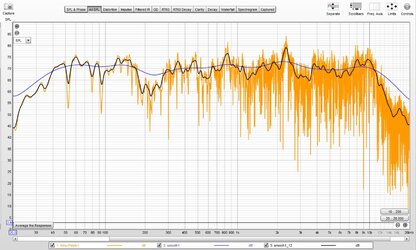Randolf
Registered
Thread Starter
- Joined
- Feb 25, 2024
- Messages
- 3
More
- Main Amp
- Yamaha R-N803D
- DAC
- minidsp DDRC-24
- Front Speakers
- Lowther Fidelio
- Streaming Equipment
- WiiM Pro
I have created a tiny command line frequency response display and comparison tool "FreqRespGraph" on github. It can also smooth curves using a Savitzky-Golay filter. However the results look rather different to REW results, which uses a IIR filter based approach:

- I need about twice the smoothing bandwidth e.g. 2/12 vs. 1/12 octave to create a very similar result.
- For broad bandwidth smoothing e.g. 1/1 octave the REW result looks strange to me. In a response with rolled off low and high frequency range the REW smoothed curve runs clearly above the raw data. The attached screenshot show raw data (orange), REW 1/12 (black) and 1/1 (blue) smoothed curve. This is not the case with my Savitzky-Golay filter (see examples in "FreqRespGraph" repository on github).













